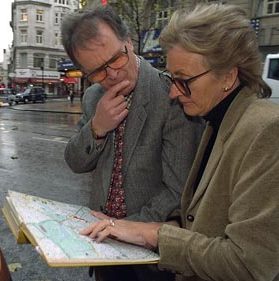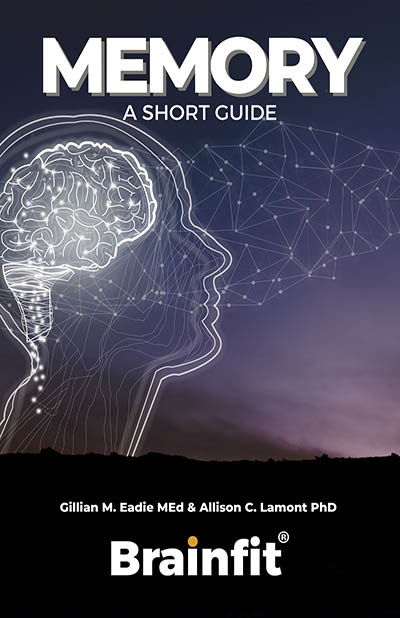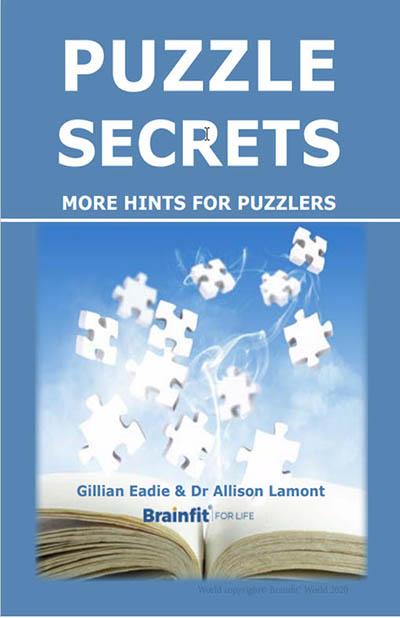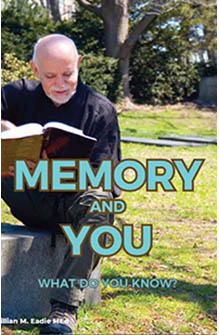Are you one of the lucky ones?
Can you read maps?
Understand a joke?
Get what an artist means in a painting?
If you can
Chances are you are one of the lucky ones.
Because
Not everyone can!
Knowing how the world works nonverbally (that is, without words or language) is a skill that can deteriorate as you get past 50. And your memory relies on it.
When you remember pictures or photographs, shapes, what things look like, designs and colours, navigate maps and interpret road signs, you are using your nonverbal skills. Similarly when you solve problems, recognize that something is funny (i.e. humorous), appreciate music or art and even when you understand the size and shape of rooms and objects (so that you don’t bump into them!), your nonverbal memory is supporting you.
But after age 50+
This may not happen automatically.
Nonverbal memory needs practice!
Check YOUR nonverbal memory.
This two-minute training video helps you develop your nonverbal memory.
Remember it is TRAINING – it isn’t a test!
So if you need more time with each shape, pause the video until you are ready to move on …. Try it several times.
Is it normal to find this exercise hard?
Memory changes in your 50’s and 60’s are usually quite normal.
And as I say, over and over,
Normal, but NOT acceptable!
People who forget in public lack confidence.
Forgetting makes them seem older, uncertain and not up with the play.
And you don’t need to accept that image for yourself.
No matter what age you are.
How others like you strengthen nonverbal memory skills.
Thousands of our customers have tried our courses already. Read some of their feedback on Seven Second Memory:
I am in a dance class which performs group dances. I had problems remembering movements and positions, although obviously lots of practice helps. Your training on using both ‘sides’ of my brain has helped me a lot and I find I am visualizing myself through the sequences now. Thank you so much! Alicia.
Retirement had left me bored – and I realise my brain was bored as well. Your Memory Tune course has given me the motivation and skills to put this behind me. Lana, 65
Here’s how Lana remembers shapes with confidence.
Lana said it took less than 2 minutes to ‘get’ this strategy. Recalling or remembering shapes is an active process that anyone can do. Follow along with Lana, step-by-step.
Two-Minute solution for Recalling Shapes.
- When you first see the shape, notice the key structure – it may be a circle, square or triangle.
- Pay close attention to the shape, noting additional features.
- In the few seconds you have, associate the shape with an image, if one quickly comes to mind. (Something with the same shape? or the same name? e.g. is the shape like a road sign, or a castle or an animal?)
- Take time to associate any features of the shape with that image.
- Take a ‘mental snapshot’ of the shape as you think about your image.
- In a quiet moment later in the day, recall each of the shapes (and your associated images). This recall practice is really important for later remembering.
There are quite a few steps but, in reality, it takes only a minute or two.
The SECRET is staying alert though the sequence.
Make sure YOU are in control.
It’s a simple strategy. AND. IT. WORKS.
It works because you are carefully giving the shape details multiple ways of being encoded into your long-term memory. Then, when you want to recall the shape later, you have more than one cue and association to bring the information to mind.
Keep focused.
If your mind wanders or you are thinking of something else at the same time as you are observing the shape, your brain will discard the shape within a second or so. And you forget!
Recall and repetition are the friends of a good memory. Practise them.
Always be conscious of creating memory traces.
- You will remember shapes.
- You will exercise, rebuild and strengthen the nonverbal function of your brain.
- And your alert and youthful brain will impress your friends!
Let us know when you try this memory strategy. How did it work for you? And how long did it take to master? Leave a comment for us.
Did you find this article useful? We are providing these strategies free of charge and all we ask in return is that you please pass it on to at least three friends.
On the video, please click the ‘Like’ button and subscribe to our channel. That will make sure you see our new tw0-minute solutions.
Not already on our email list? To get the rest of this series from the Brain and Memory Foundation, just fill in your email address in the box below. We never share personal details and you’ll love the information we send.
Happy remembering!
Brain and Memory Foundation





